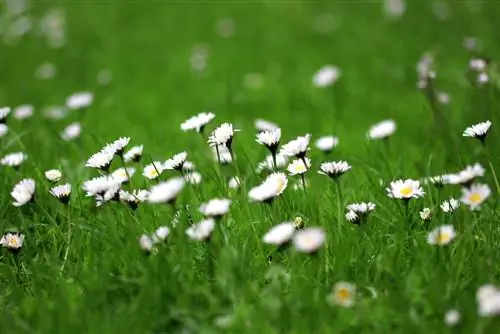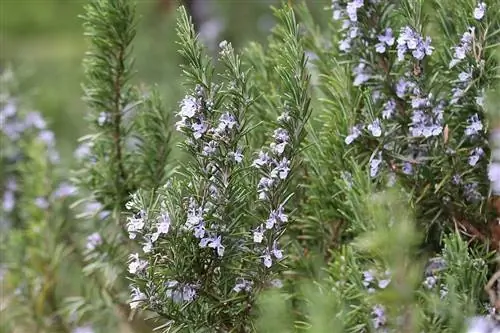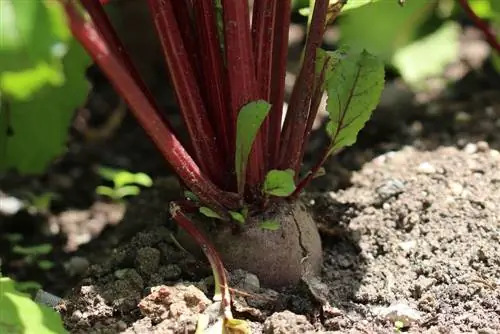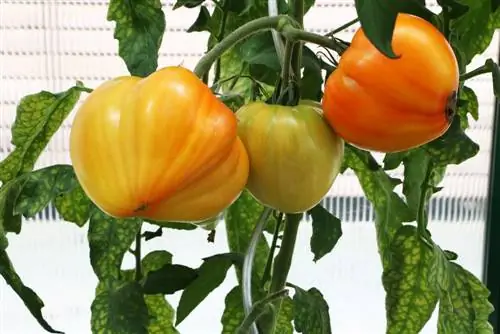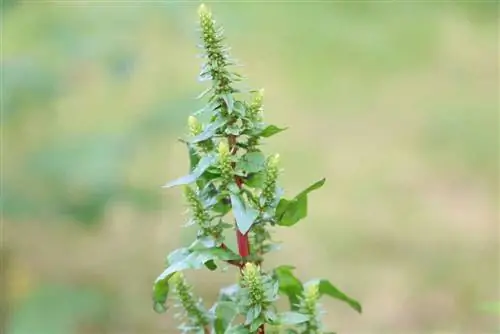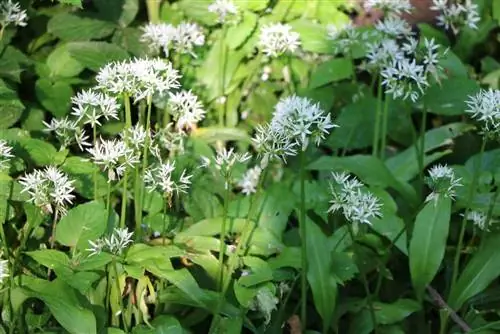- Author admin [email protected].
- Public 2023-12-17 03:39.
- Last modified 2025-01-24 12:45.
The flowers of certain plants are suitable for eating and are a real eye-catcher on the plate. The flavors range from sweet to spicy, so that it can be used to enrich various dishes. However, not all flowers are edible, so caution should be exercised.
From A to D
Ackerhellerkraut (Thlaspi arvense)
- Flowering period: April to June
- Use: in salads and steamed with vegetable dishes
- Taste: mild, cabbage to mustard-like
Wild garlic flowers (Allium ursinum)
In this country, wild garlic grows wild in sparse forests, along the side of the road and near fields. People have long appreciated the hearty taste of the plant for preparing dishes. The whole plant is suitable as a seasoning for salads, for refining soups and for flavoring fish dishes. The flowers can also be used to make vinegar, which tastes slightly of garlic and onions.
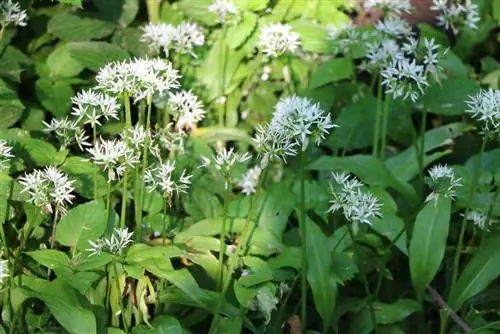
- White flower umbels and leaves can be eaten
- Flowering time is from April to May
- Edible flowers are rich in iron, magnesium and vitamin C
- Contain essential oils with he alth-promoting effects
- Produces a slightly spicy to mustard-like taste
Note:
Caution is advised when collecting wild wild garlic in the forest, as there is a risk of confusion with the poisonous lilies of the valley.
Borage (Borago officinalis)
Borage is a spice plant that used to be very popular, but is now rarely found in herb beds. The plant is quite undemanding and fast-growing, and it produces edible inflorescences.
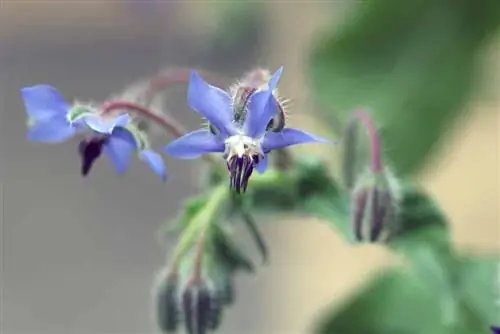
- Flowering period from May to July
- Borage flowers are star-shaped and blue to purple
- Have a fine and hearty cucumber aroma
Chrysanthemum (Chrysanthemum)
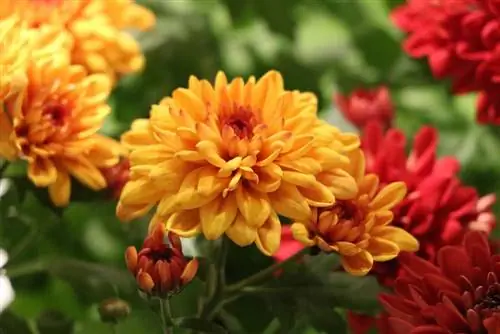
- Flowering period: August to December
- Use: In soups and salads, as a garnish, in filled eggs, for baking
- Taste: tart to bitter
Scented Geranium (Pelargonium)
Scented geraniums produce edible petals, which vary greatly in color and taste among the numerous varieties. The intense aroma of the inflorescences goes very well with sweet dishes and drinks, for example punch, jam and pudding.
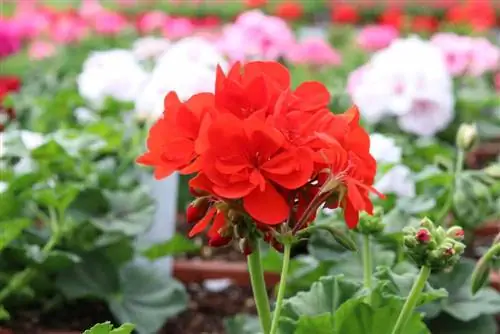
- Flowering period from May to September
- Offer a wide range of flavors
- From apple to orange, peach to lemon
- Taste depends on the variety, like ginger, pine resin or nutmeg
Scented violets (Viola odorata)
Violet flowers are a visual highlight that embellish candied cakes and desserts. They also go well with combined salads and can even be enjoyed on their own. The plants grow wild in many places in this country. When harvesting, cut off either just the inflorescences or some edible leaves.
- Flowering period between March and June
- There are many bright colors to choose from
- Lovely smell with mild aroma
- Taste is perfumed and sweet
From G to K
Daisies (Bellis perennis)
The daisy flowers are suitable for eating, they go well with salads and to refine hearty vegetable dishes. In natural medicine, daisies are used as a medicinal herb, but only in small quantities. With the beginning of spring, flowers grow wild in meadows, on the edges of fields and paths. If the warm weather continues, the delicate plants can bloom until late autumn.
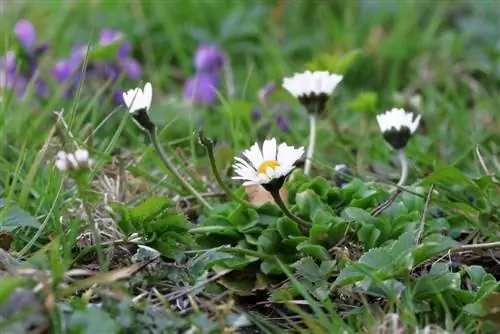
- Very long flowering period from April to November
- young flowers are particularly tasty
- Taste is slightly nutty and spicy
- Older flowers have a more bitter taste
- Contain bitter, tannins and mucilage
- Form essential oils and glycosides
Elderflowers (Sambucus nigra)
The black elderberry is a native plant whose edible flowers are very popular for making jelly, jam and syrup. This can be used to create sparkling cocktails and refreshing lemonades in summer. The large-sized flower umbels provide shelter for insects, so gently shaking out the flower umbels after picking is recommended.
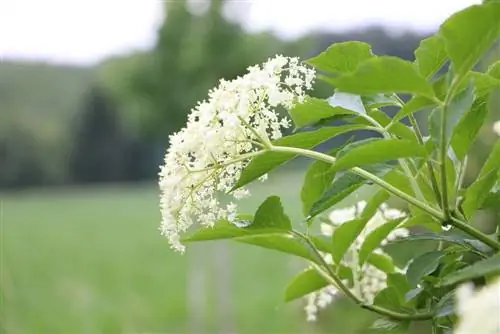
- Flowering time depends on the variety from May to July
- Flowers are white and smell like vanilla
- Taste is reminiscent of butter with a slight pepper note
- Only use cooked, are poisonous when raw
Jasmine (Jasminum officinale)
Jasmine is an exotic plant that comes from Asia and is an important component in traditional tea culture. Due to the lack of winter hardiness, only container storage or cultivation in the winter garden is possible in Germany. The delicate inflorescences are ideal for refining sweet baked goods, desserts, ice cream and lemonade.
- Flowering period from May to August
- Star-shaped flowers in bright white
- Intense and captivating scent
- Can be used fresh or dried
- Form a fine and sweet aroma
Nasturtium (Tropaeolum)
The lush flowers of the nasturtium go well with hearty foods such as salads, sandwiches and soups. The striking flowers shine in a summery color and are ideal as decoration for dishes. The closed buds of nasturtiums are often used as a substitute for capers.
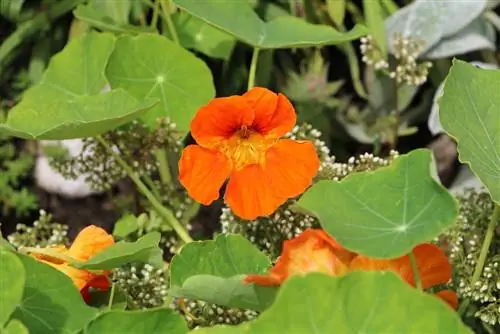
- Blooms persistently from the end of May until the first frost
- Forms bright orange flowers
- Has a spicy, peppery taste
- Contains mustard oil glycosides, serves as a medicinal plant
Note:
After picking, it is best to use the petals fresh straight away, as they fade quickly and become unsightly.
From L to R
Lavender flowers (Lavandula angustifolia)
Real lavender is particularly suitable for eating, as the taste of the other varieties is not convincing. Lavender flowers enrich Mediterranean spice mixtures with their typical scent and go well with hearty meat dishes. The intense aroma also complements sweet desserts and the dough for home-baked bread.
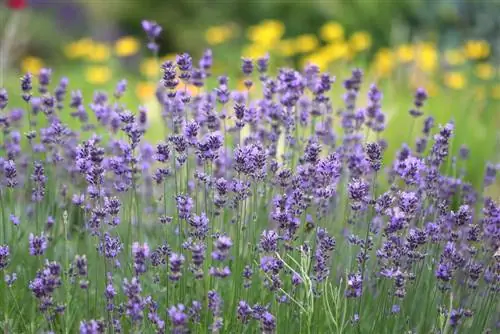
- Flowering period from June to August, if warm until September
- Fragrant flowers are bright purple, mild and sweet
- Traditional medicinal plant with broad effects
- Can be used fresh or dried
Dandelion flowers (Taraxacum)
The dandelion is a completely edible plant, from the young leaves to the flowers. The fresh flower heads can be prepared into a plant-based alternative to honey, as well as boiled down into jelly and jam. Nevertheless, in many gardens, dandelions are still viewed as annoying weeds and are destroyed.
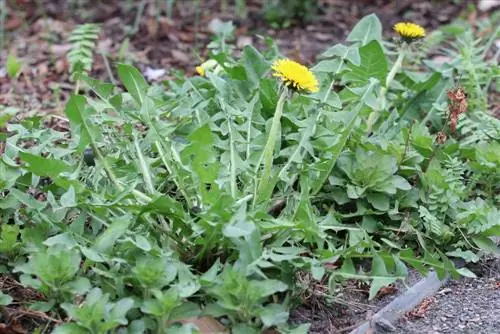
- Flowering period between April and June
- Re-bloom possible in late summer to autumn
- Yellow flowers impress with their sweet taste
- Contain a lot of vitamin C and bitter substances
Marigold (Calendula officinalis)
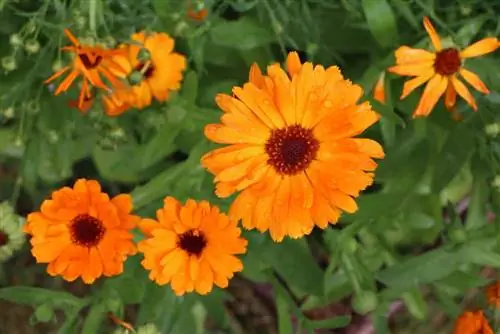
- Flowering period: May to November
- Use: with pasta, rice and in salads, as a garnish and in cakes
- Taste: spicy, similar to chives
Rose petals (Pink)
The rose is the queen of flowers and is not only pretty to look at, it also produces edible petals. Candied, the pretty rose petals traditionally decorate cakes and other desserts. Rose water is also an important ingredient in oriental sweets. However, Christmas roses, Peony roses and hollyhocks do not belong to the genus Rosa and are poisonous to the human body.
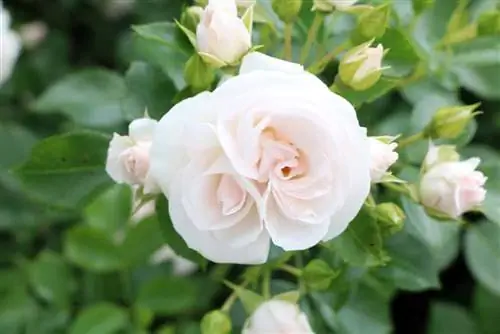
- Roses bloom in the summer months
- Some varieties even last until the first frost
- Petals taste intense and floral
- White base is bitter, remove before consumption
Red Clover (Trifolium pratense)
- Flowering period: May to September
- Use: for baking and as a vegetable in salad
- Taste: Flowers taste sweet, leaves are reminiscent of the taste of peas
From S to Z
Yarrow (Achillea)
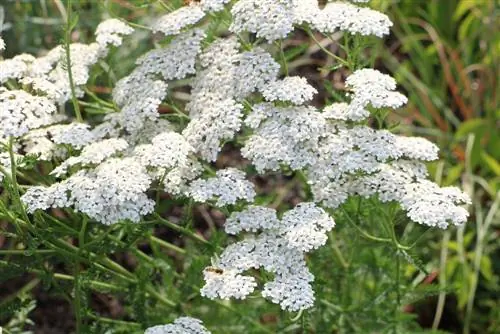
- Flowering period: June to September
- Use: flowers too tough to eat, dried as a spice for tomato dishes and as herbal s alt
- Taste: spicy, rather bitter
Primroses (Primula veris)
Primroses enchant with delicate inflorescences and a fine scent, and the plants are a real treat for the palate. They go well raw in salads, as an addition to soups and as a pretty decoration for desserts. Since the wild cowslips are protected, collecting them in the forest is prohibited by law.
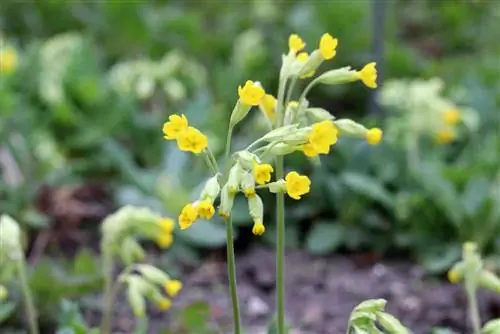
- Flowering period between March and June
- Taste is slightly sweet
- Consume yellow inflorescences only in moderation
- Contain stomach-irritating saponins
Chive flowers (Allium schoenoprasum)
Chives are a well-known classic among herbs and can be found in many gardens. However, most hobby gardeners do not know that the inflorescences can also be eaten. They go well with meat, fish and in salads, and they can also complement desserts.
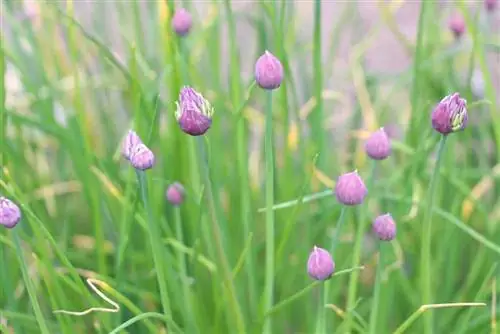
- Flowers depending on the weather from March to October
- Purple flowers are similar in taste to chives
- But they are not quite as intense and less spicy
- Also form a sweet note
Pansies (Viola)
- Flowering period: spring to mid-summer
- Use: as a vegetable in a salad or candied in a dessert
- Taste: hardly any aroma
Deadnettle (Lamium)
- Flowering period: April to October
- Use: in soups, with salad and for sauces
- Taste: sweet, honey-like
Zucchini flowers (Cucurbita pepo var. giromontiina)
Zucchinis belong to the pumpkin family and also produce edible flowers. Since these are very large, you can even add a delicious filling to them. Goes well with salads, meat and fish, but can also be used to make desserts.
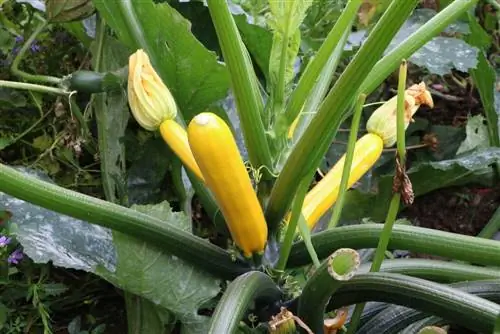
- Flowering time is from June to September
- Blooms in warm locations until October
- Zucchini flowers are yellow delicacies
- Nutty taste, remove bitter stamps
Tip:
Collecting wild flowers should not be done on busy roads or near industrial facilities to avoid contamination.

